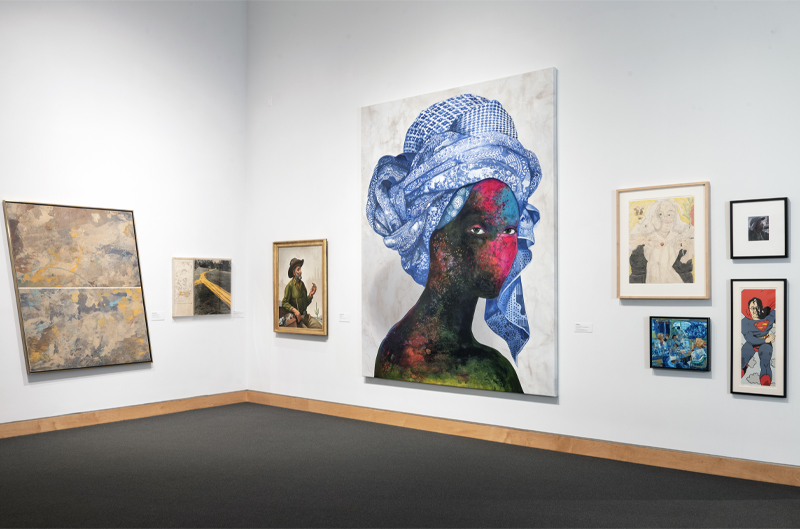When it comes to art theory, Albert Einstein might not be the first person to come to mind. But his thoughts on art perfectly capture the mission of the Kemper Museum of Contemporary Art’s fall exhibitions.
“Art is standing with one hand extended into the universe and one hand extended into the world and letting ourselves be a conduit for passing energy.”
Kemper Museum’s three fall exhibitions not only channel the viewer’s energy but specifically the energy of Kansas City. While local connections have always been important in the museum’s curation, says Erin Dziedzic, Director of Curatorial Affairs, this season’s exhibits connect on a very intimate level, starting with Rafael Lozano-Hemmer’s installation, Pulse Topology.

The Heart of America
Kemper Museum approached Lozano-Hemmer about an installation just before the pandemic began. As safety measures forced people to isolate, Lozano-Hemmer’s piece began to take shape, connecting people heart to heart, literally.
The installation, made of more than 3,000 LED light bulbs suspended from the ceiling, creates an inverted landscape that recalls the Flint Hills or the Ozarks. While the experience of standing under the illuminated bulbs would be dazzling enough, the installation also takes biometric readings of those in the room and pulses to reflect the heart rate of the visitors to the installation.
“It started as heartbeats from previous Pulse projects,” Dziedzic says. “When you first came into the space, visitors experienced thousands of other people’s heartbeats from around the world where he had installed different iterations of this project.”
As the largest version of the Pulse series, Lozano-Hemmer invites people to scan their hands to add their heartbeats to the project, giving it a uniquely Kansas City flavor.
“The people of Kansas City that come and see the work will leave their mark behind because their heartbeats are added to the installation,” Dziedzic says. “By the end of the installation, it will represent the heartbeats of the people that live in this community.”
Pulse Topology closes on January 2, 2022.

A Birthday Remembered Through Art
If you haven’t heard, Missouri is celebrating a birthday this year, and it’s a significant one—200 years. To celebrate the bicentennial, Kemper Museum opened up their permanent collection to a group of civic and non-profit leaders. Their 50 selections comprise the Contemporary Art and the Missouri Bicentennial exhibit.
Leaders like Dr. Dina Bennett of the American Jazz Museum and Daniel Wildcat of Haskell Indian Nations University chose artworks that spoke to issues that have affected Missouri for the last two hundred years and will likely continue to make an impact. Together, the 13 civic leaders chose six themes and works that they felt represented them.
Dziedzic says that the process of developing the Bicentennial was one of the most rewarding parts.
“It was such a wonderful process. In addition to letting us work more thoroughly with some of our community partners in other organizations, it also allowed them to work with each other for the first time,” she says.
Contemporary Art and the Missouri Bicentennial closes on February 21, 2022.

Preparing to Dance
The annual Atrium Project series focuses on commissioned projects featuring emerging and mid-career Latinx artists. The latest installment is Aliza Nisenbaum: Aquí Se Puede (Here You Can). The series of paintings focuses on the salsa community in Kansas City, but like so many other projects, Nisenbaum’s normal process of creating was interrupted.
“Aliza normally paints from life, and the intention was to have her come here and paint individuals from the salsa scene, but COVID put a wrench in those plans pretty quickly,” Dziedzic says.
Instead, Nisenbaum got to know her subjects via Zoom calls and through photographs. Her conversations spawned the series of paintings that depict dancers in the reflective, in-between moments of dance—a dancer listening to the music, a DJ contemplating playlists, and a musician warming up on the guitar before playing with a band.
Aquí Se Puede (Here You Can) closes on July 31, 2022.
All three exhibits have deep ties to the Kansas City community, whether from their origin point or their end result. Reserve free tickets to experience all three presentations at KemperArt.org.


